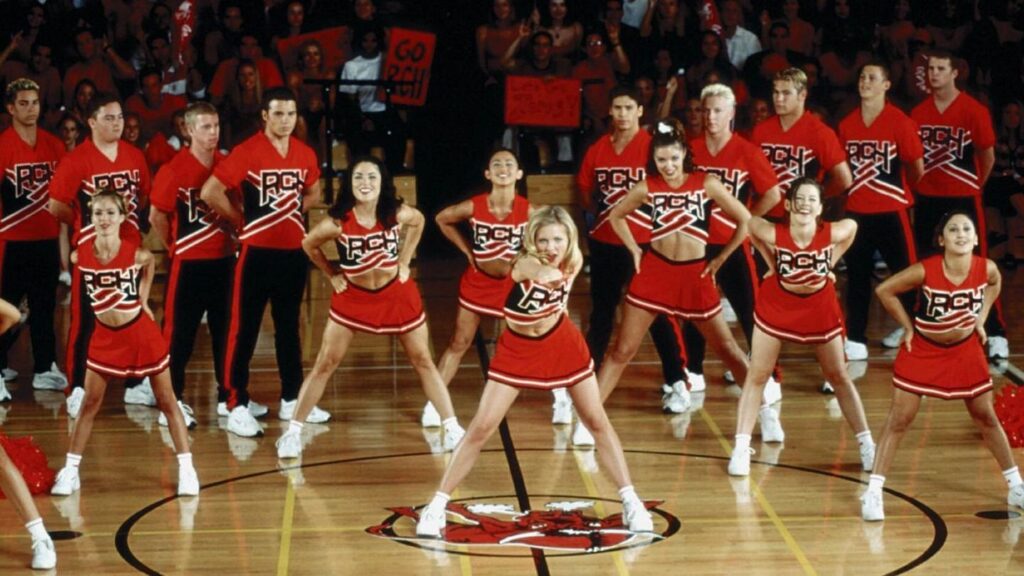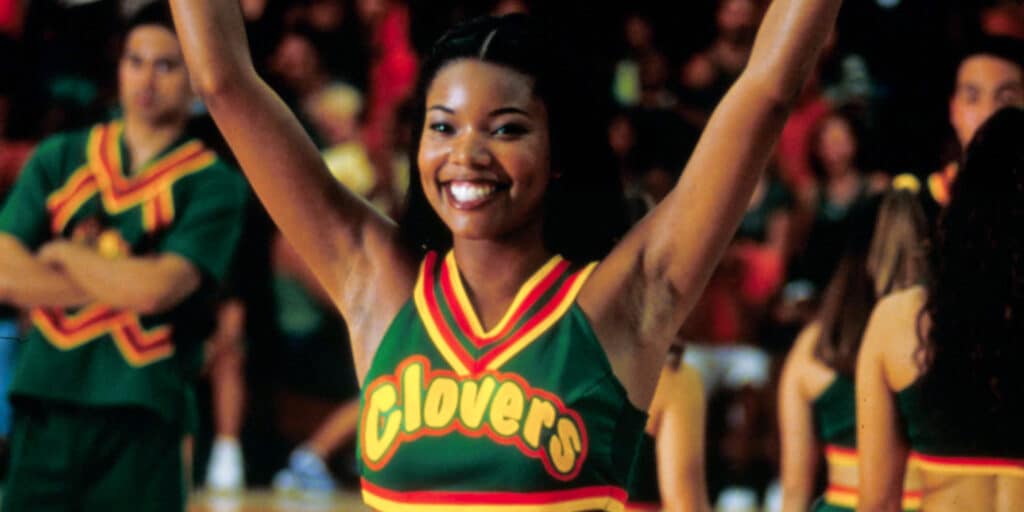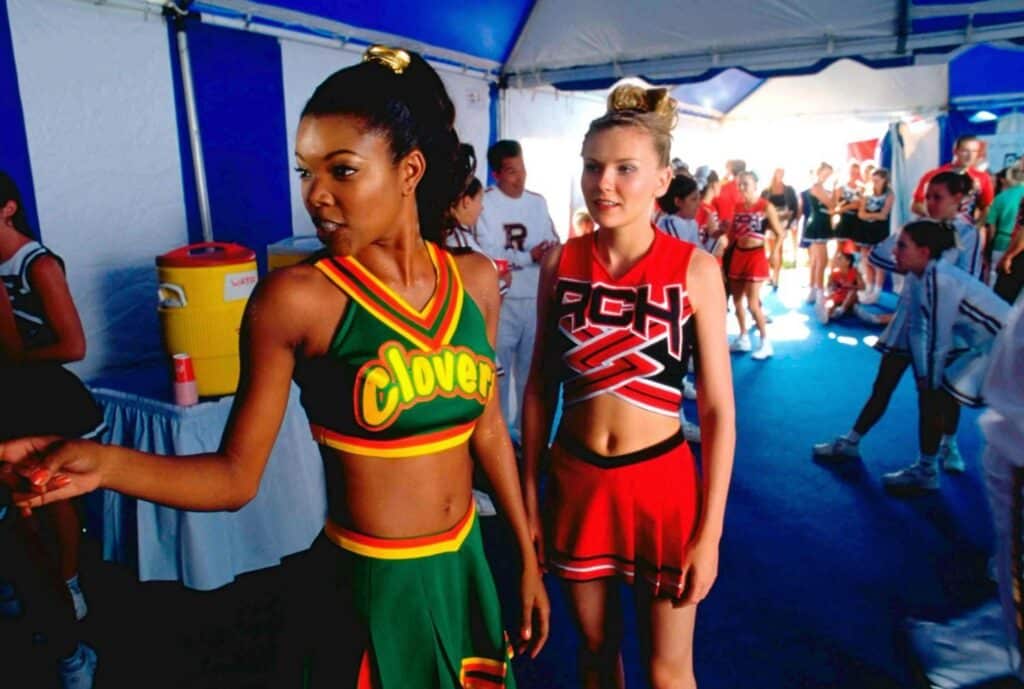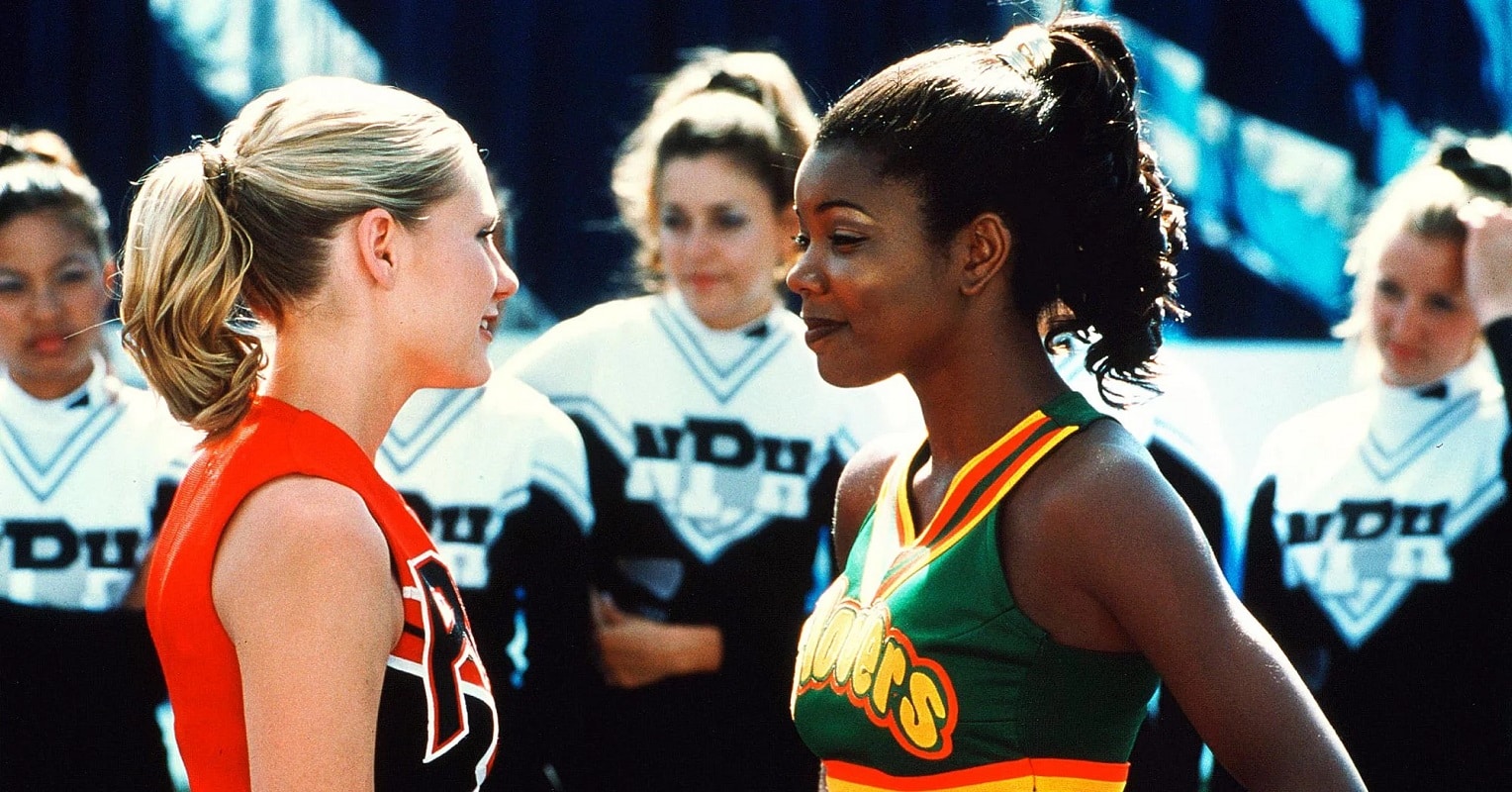Read also:
How to Watch FX Live Without CableHow To Watch AMC Without CableHow to Watch ABC Without CableHow to Watch Paramount Network Without CableKirsten Dunst and Gabrielle Union’s cheerful high-school comedy finds ways to pepper charming rivalry with digs at cultural theft.
20 years after Bring It On bounded into cineplexes, we are returning to the 2000 National High School Cheerleading Championships for one more pass to reevaluate our scores.*
In case you’ve been living at the bottom of a spirit pyramid for the last two decades, a brief replay: Bring It On follows newly elected cheer captain Torrance Shipman as she prepares her squad to defend their title at the state cheerleading championships. But when it’s revealed that her former captain was stealing routines from an all-Black squad and passing them off as their own, Torrance and the Toros must reconcile their past and discover their own unique style in order to defend their title.
*Scores are calculated in Spirit Fingers.
Spirit: 10/10

One thing’s for sure, Bring It On has heart. Director Peyton Reed (Down With Love, Ant-Man and the Wasp) gives the film a cheer-full tone that captures the biting irony of millennial teen humor while providing plenty of sentiment. From the first to last frame, everyone involved is clearly having a great time. One of the lasting enjoyments of the film is the way both The Rancho Carne Toros and East Compton Clovers feel like believable teams. (They aren’t believable teens, but it’s for the best.) This is largely because each team has such a strong captain to anchor them.
The Toros’ Torrance Shipman (Kirsten Dunst) is a sheltered upper-middle-class white girl, yes, but she’s not an airhead. When these revelations shatter her sense of reality, she doesn’t meet this challenge with tears. She meets it correctly, with the resolution to be better and make amends.
Dunst handles screenwriter Jessica Bendinger’s quippy lingo and Torrance’s sometimes erratic emotions with the grace fitting for an actress 12 years in the business. And she shares this freely, particularly in her scenes with best friend, Missy (the ever-alluring Elisa Dushku). Though we see the world from her perspective, when she’s with her squad, there’s a free give and take which makes the comedy still sing. This is her 20th film performance and Dunst finally gets to turn out all of her tricks and present to us an actress ready for adult stardom.
Isis of the East Compton Clovers (Gabrielle Union) has such an attractive authority about her. She arrives a fully formed boss and maintains that power until the very end. Isis sparks when she is being strong for her squad and dissing the competition. She is someone we innately root for because she exudes intelligence and self-possession that feels rare, but especially for the time.
Far from being just a “whelmed” best friend like she was in 10 Things I Hate About You the year before, Bring It On shows Union has the ability to unleash reams of charisma. Union has the opposite problem as Dunst; where Dunst has too much to work with, Union doesn’t have enough. All the background we get on Isis is told to us through little gestures and intonations carefully placed by a cunning actress.
Tumbling: 7/10
Traveling back to 2000 means that you inevitably encounter jokes, slang, and idioms that aren’t allowed in mainstream progressive films anymore. Right out of the gate, we trip over ableism and transphobia as we track through the girl’s locker room as they are having their own obscene conversation. These cheerleaders are raunchy and viscous. No body is safe.
As part of the culture that produced it, Bring It On obsesses over the complexities of the female (teenage) body. Most of the sour jokes are about the body’s size, sex, and capacities. Gay jokes are likewise centered on the body, particularly the way the body is penetrated or how queer tongues speak different languages.
In this, Bring It On tottles a fine line of humor. The homophobic jokes are somewhat counterbalanced by a celebratory portrayal and positive resolution for the queer characters. But the banality of pervasive ableism is still striking. The pervasive cruelty directed at the young women’s bodies in the film springs from society’s continued dispossession of women’s agency over their own bodies. The characters learn (and correct) many things through the film, but this is one social problem we tumble over to this day.
Jumps: 5/10
Bring It On leaps hard to signal its virtue, but ultimately doesn’t reach the heights it sets out to achieve. This is because the Black characters in Bring It On get little to no human development. They don’t even have last names. All we know about them is that they’re the best and that’s it. That’s not a negative constant, per se, but it still leaves the black characters feeling one-dimensional on the page. They’re only made two-dimensional by the talents of the actresses, but still never enough to reach the three-dimensionality of Torrance and The Toros.
The poster art for the film is famous for its split-image of the Toros and Clovers positioned against each other, promising a peppy look at race relations in the world competitive high school cheerleading. It suggests both sides would share equal screen time, but they disproportionately do not.
Instead, we get yet another story of race relations told entirely from the point of view of the white characters, which threatens to curb any political trajectory the film promises. Bring It On ironically seems to appropriate motivation from its scenes with the Clovers to drive the next act. The film thus falls into the classic white martyr narrative of presenting Black bodies as problems, or sources of drama, rather than people.
Stunts: 8/10
Perhaps the most unique thing about Bring It On is the way it realistically visualizes cultural appropriation. Former captain Big Red filming, stealing, and then profiting off of Black talent is a concrete example of how the real cycles of appropriation turn. Few films provide such a literal example that we can point to if we want to teach others about what ‘cultural appropriation’ means. The year 2000 may be too early for the actual words to show up as a Discourse™, but looking back on it now, it’s apparent that appropriation is at the center of the conflict driving the film.
And though the Clovers don’t get much development or perspective of their own, their rejection of white bourgeois handouts and their appeal to community is somewhat radical for the times (and perhaps even still today) and shows a fortitude we don’t see enough of. All the Clovers need is the support of other Black folks. They achieve Black success without giving Torrance the satisfaction of becoming a white savior.
Voice & Crowd Leadership: 9/10

The Toros and the Clovers are contesting more on the cheerleading mat than meets the eye at first pass – for instance, a modern understanding of race relations among a new generation of young people, and the worthiness of racial reparations on its face. Bring It On may be one of the only films of the 2000s that actually gives Black people their due reward. Not only that, but the white protagonists take a step back and accept their second place with joy.
This film, unlike Remember the Titans, which came out the same year, is a rare instance of dealing with race issues through a contemporary lens, rather than one of the past. Instead of being a lesson in tolerance and proving there are “good white people” juxtaposed to racist “bad whites,” Bring It On addresses taking accountability now as part of unlearning racism and dismantling past systemic racist inequities that have supported all white people.
Torrance may not have been cultural appropriator with the video camera, but she did profit from the exploitation, not unlike how white folks today profit from systems of slavery even if they weren’t directly involved. When she and her squad realize the racist abuses structuring their prominence, they attempt to right those wrongs. In this, Bring It On is a soft-feminist model for how white folks can do the same.
Final Result: Silver

While Bring It On falters on some of its identity politics, it sticks a very material landing that is highly teachable — even more so than Titans. There’s still a need for more discussion around whether film can offer a practical political education, especially about race. But, if anything, Bring It On offers a chance for an emotional education by demonstrating a compassionate argument for reparations.
Stepping aside and letting Black folks matter and succeed does not need to be hostile, because it’s good for everyone. Though it may sometimes put the ick in problematic, Bring It On models for us white folks how we can enjoy second place with joy and grace. All trophies are better when winners earn them honestly, and the right people receive them for the right reasons.

